The ALLMTN group is one of my favorite SDURO (Yamaha powered) electric bike lines from Haibike. It comes in four trim levels with varying levels of component groupsets and I tested the RC which is one step up from the bottom, priced at $4,299. That’s $600 more than the entry level SL model and the biggest difference is a 20 speed drivetrain vs. just 10 on the SL. For my ride test I climbed a very steep dirt path and those extra gears really came in handy. I wasn’t sure how shifting would perform because the Yamaha system does not offer shift detection the way that the more expensive XDURO (Bosch powered) Haibikes do. What I’ve found during my ride tests is that Yamaha relies more on torque and seems to have a shorter range of RPM which results in less mashing if you ease off while shifting but requires more shifting to happen in order to really leverage the motor’s power.
Driving this ebike is a 250 watt nominal… 500 watt peak internally geared motor that is custom mounted to the area of the frame normally reserved for the bottom bracket tube. Haibike touts their Aluminum frames as being hydroformed with a gravity cast interface at the motor mount. Basically, it looks beautiful, is strong and saves weight. What you get out is up to 80 Newton meters of torque… which is a lot for a production electric bike that follows US law for classification as a Class 1 model (permissible for use in the most environments and trials). There’s no throttle here, you just pick an assist level, pedal and the motor automatically kicks on based on your cadence and pedal torque. I had no issues climbing and was able to use the lowest two gears to reach my destination at the top of a peak on the outskirts of Simi Valley, CA where some other ebikes had struggled in days prior. The one complaint I had (and this applies for all Yamaha powered ebikes I’ve tried) is that in order to get full power from the motor I had to slow my cadence and often shifted up. With similarly specced Bosch powered models I was able to spin a bit faster while getting similar power.
Powering the bike is an impressive 36 volt 11 amp hour battery that slides in from the side and can be charged on or off the frame. The long slim design and unique mounting feature means the top tube on the bike can angle down more delivering a lower stand over height. This makes the bike accessible and when combined with the four frame size options, means more people can handle and enjoy it. Another feature I liked was the seat post dropper with remote (you can click a button, sit down and the seat post will slide down). This is super useful for transitioning from spinning on smooth terrain to bounding across bumpy terrain or bombing down a large hill. A high saddle can interfere with your leg motion to absorb bumps and kick you in the butt painfully if you drop a large bump or rock and squat suddenly.
A couple of other highlights with this and all ALLMTN models are the low-rise bars and negative-angle stem designed to protect the LCD display. The console itself is removable so you could pop it off on rough descents… just in case. Stiff thru-axles are used front and rear with 15 mm and 12 mm respectively and that’s part of what makes this a capable “all mountan” platform for use on challenging downhill terrain. Both suspension elements use air on the RC model so they weigh less and the bike comes in at ~51 lbs which is decent, both suspension shocks offer quick release and rebound adjust and the fork has remote lockout. My favorite part of this model is the bike itself, it feels great off-road and the brakes, while not top of the line, were solid on my short descent. There’s plenty of room to upgrade with the ALLMTN Pro and Plus models but the cost is quite high. I think I’d consider switching to the XDURO Bosch powered drive system for the extra money first because it suites me more… I have sensitive knees and prefer to spin faster vs. harder pressure with slow cadence. All Haibike ALLMTN models are limited to 20 mph assisted which is easy to hit on paved surfaces but feels thrilling off-road or while climbing medium grades.
Pros:
- Haibike is touting their Yamaha powered electric bikes as offering “uncompromising performance” geared for a younger demographic, zero cadence assist is meant to be more immediate (verses the Bosch Centerdrive which requires 20 rpm for the motor to kick in), in my experience both systems start extremely quickly and Yamaha is more torque responsive with a stronger but slower feel
- With the ALLMTN series (anything above the SL) you get two front chain rings for a total of 20 gears, this offers a wider range of operation 455% vs. 420% and I could feel it when climbing the steepest inclines during my ride test
- The Selle Royal saddle matches the frame, feels pretty good (but firm for active riding) and has an integrated light or bag clip for Selle Royal compatible accessories
- The display panel is large, easy to read, backlit and removable! I’d probably take it off when doing tricky downhill stuff in case of a crash), I like that the button pad is easy to reach, well sealed and has an integrated Micro USB port for charging accessories
- The Yamaha mid-drive motor operates fairly quietly in high and mid level gears (when it’s not spinning super fast)
- You can charge the battery pack on or off the frame and since it slides on from the side vs. straight down like Bosch and other brands, it allows the top tube of the frame to angle down lower for more accommodating stand over height
- Fun color scheme, the matte black with blue and fluorescent yellow accents looks rad and even the battery decals, saddle and fork are color matched!
- Nice suspension fork with 150 mm travel, a stiff 15 mm thru axle, remote lockout and rebound adjust to handle a wide variety of terrain
- The rear suspension is also light weight air and has a rebound adjust with two settings that almost behaved like a light lockout
- Excellent weight distribution, the motor and battery are positioned low and center improving handling, both wheels have quick release for easier transport or trail maintenance and the motor is well protected with a replaceable plastic skidplate (also color matched!)
- Offered in four frame sizes for improved fit whether you’re tall or short and if you’re female check out the similar FullLife model from Haibike for a different color scheme and shorter reach or downgrade to hardtale with the HardLife models
Cons:
- Limited motor speed range, I found that when switching down to lower gears the motor support dropped out significantly (even in the highest pedal assist mode) because it relies so heavily on torque as an input, this was a bummer when approaching hills at high speed riding off-road
- No shift sensing or shift detection built into the drive system, this could lead to more mashing, banging and premature wear on the chain, cassette and derailleur
- Large battery charger with cables that don’t come unplugged so it’s extra long even when the cables are tied up, it also weighs more than some other chargers I’ve seen
- I found that the battery pack can rattle a bit at times and that you really need to make sure it’s clicked in before riding off, you could turn and remove the key but then push to hear the click of the battery
Resources:
- Official Site: http://www.haibike.de/microsites/sduro/us/
- More Pictures: https://goo.gl/photos/3uBZU7YJv5LEqUuD6

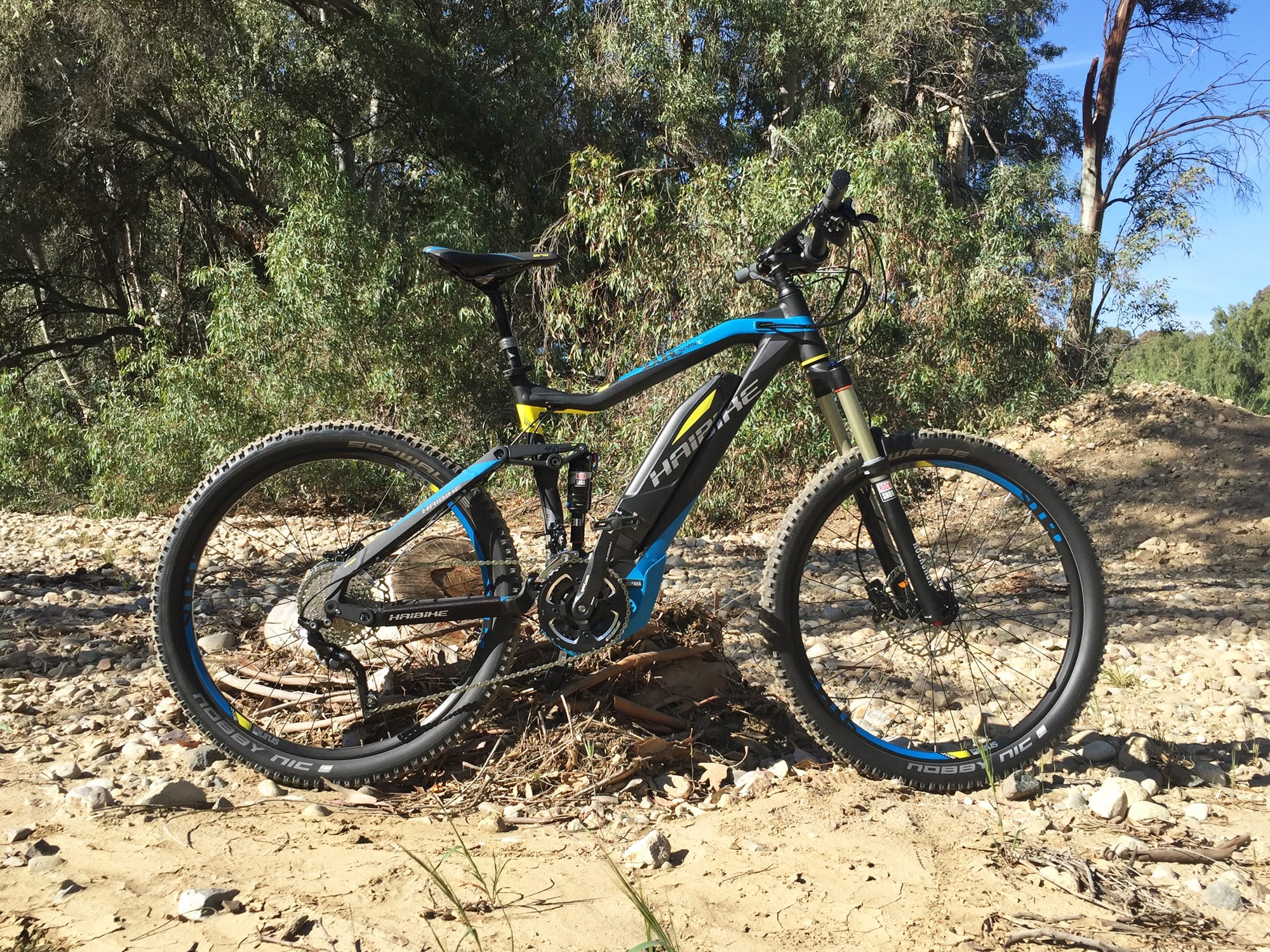
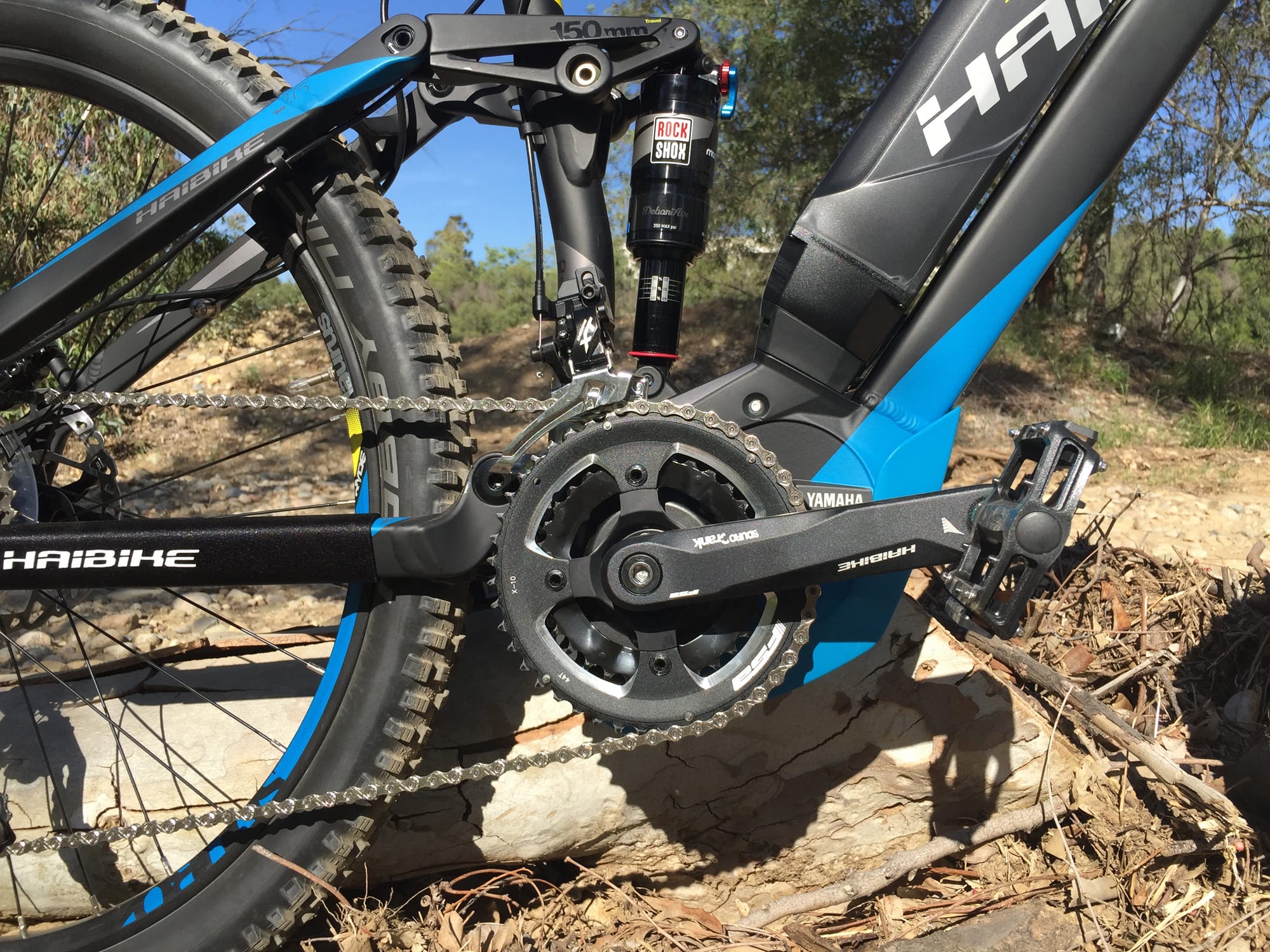
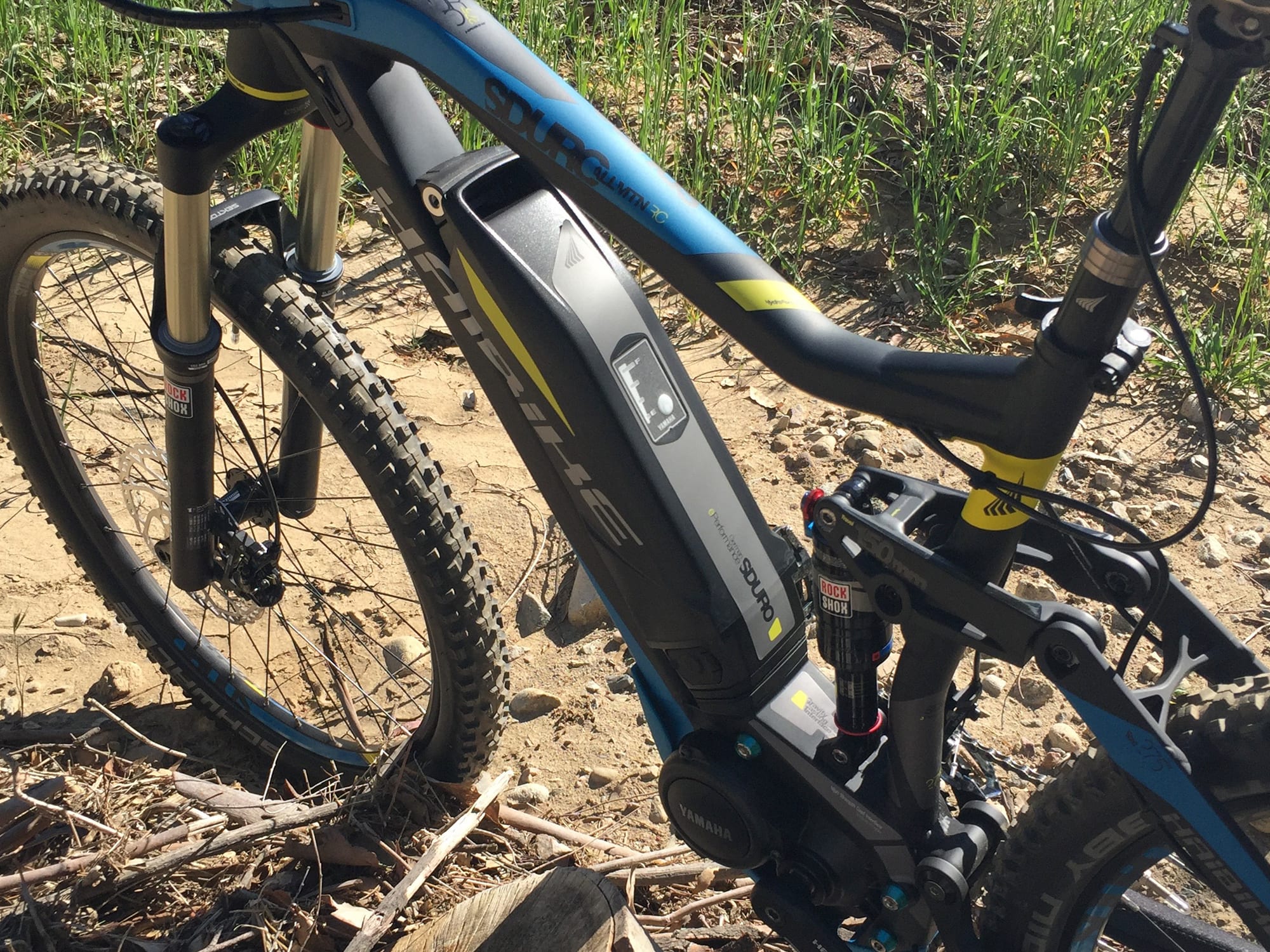
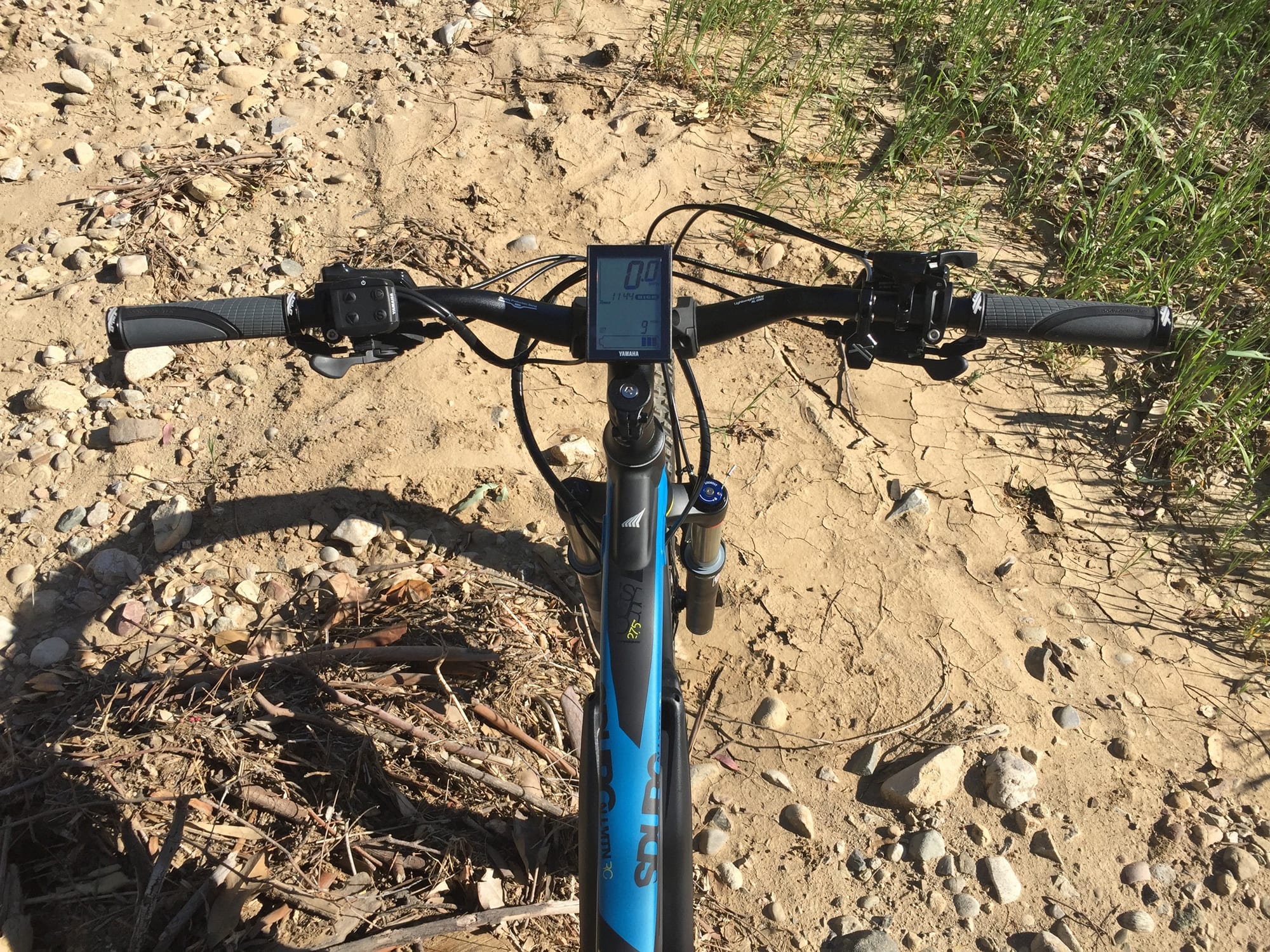
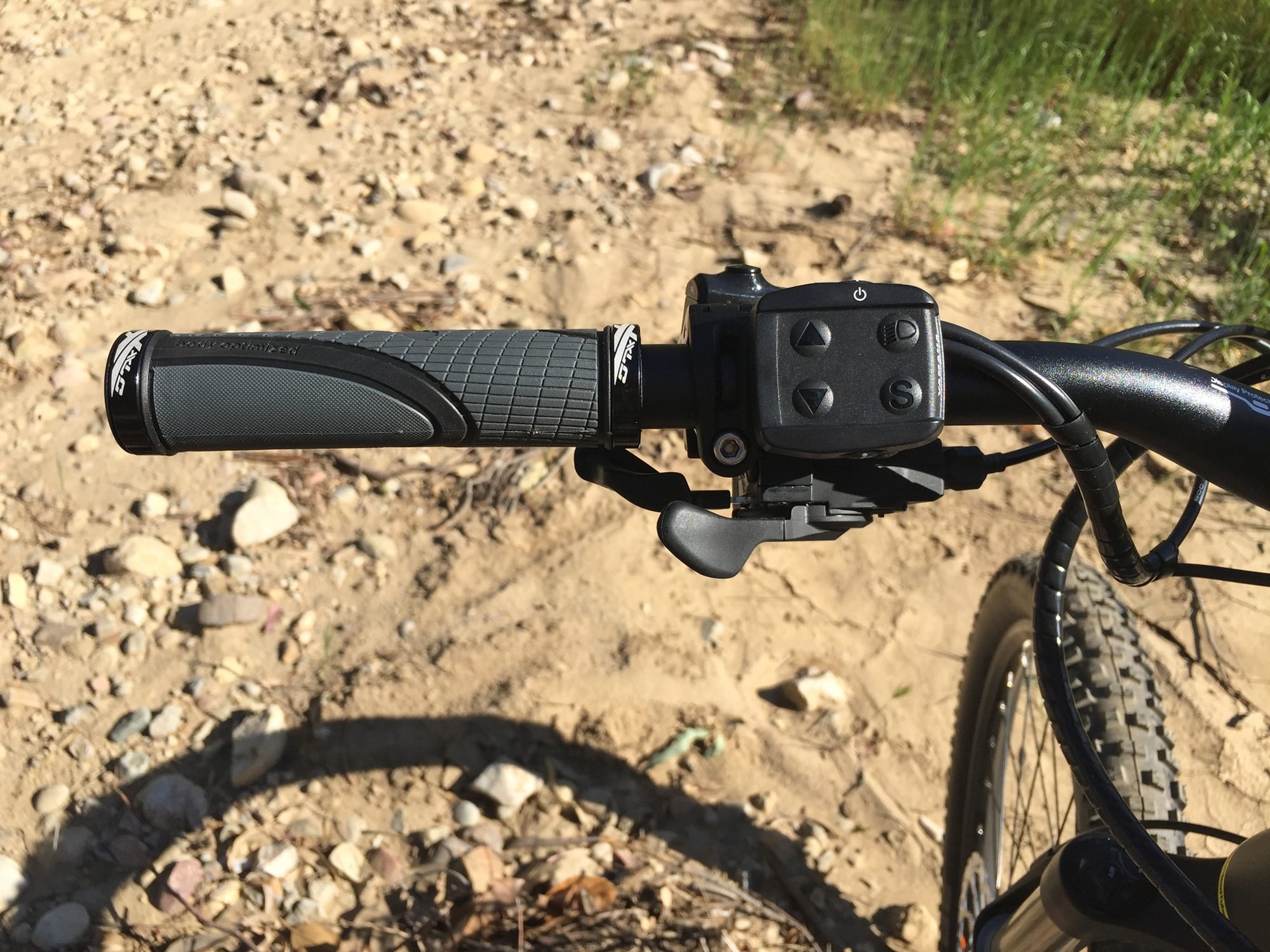



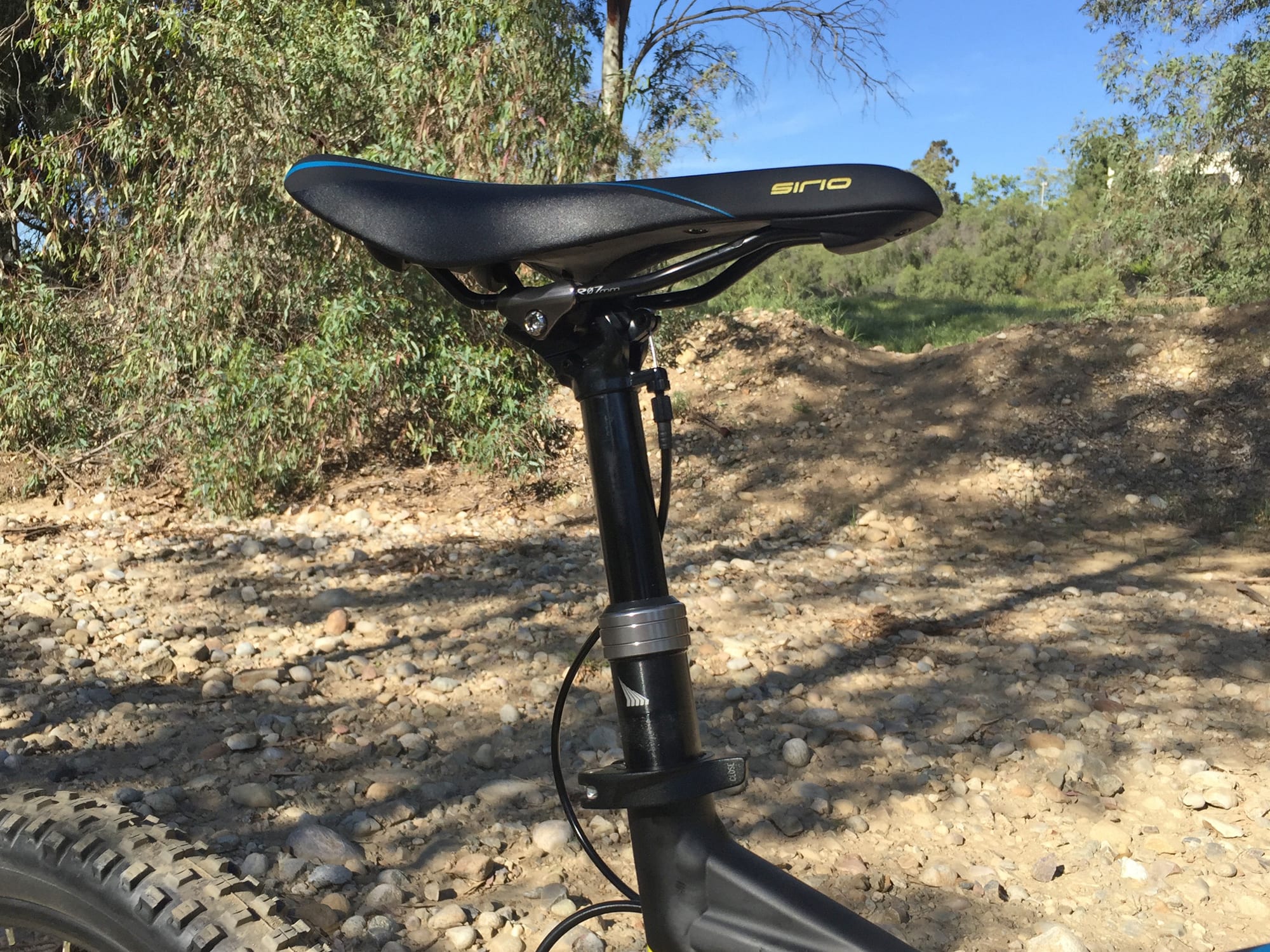
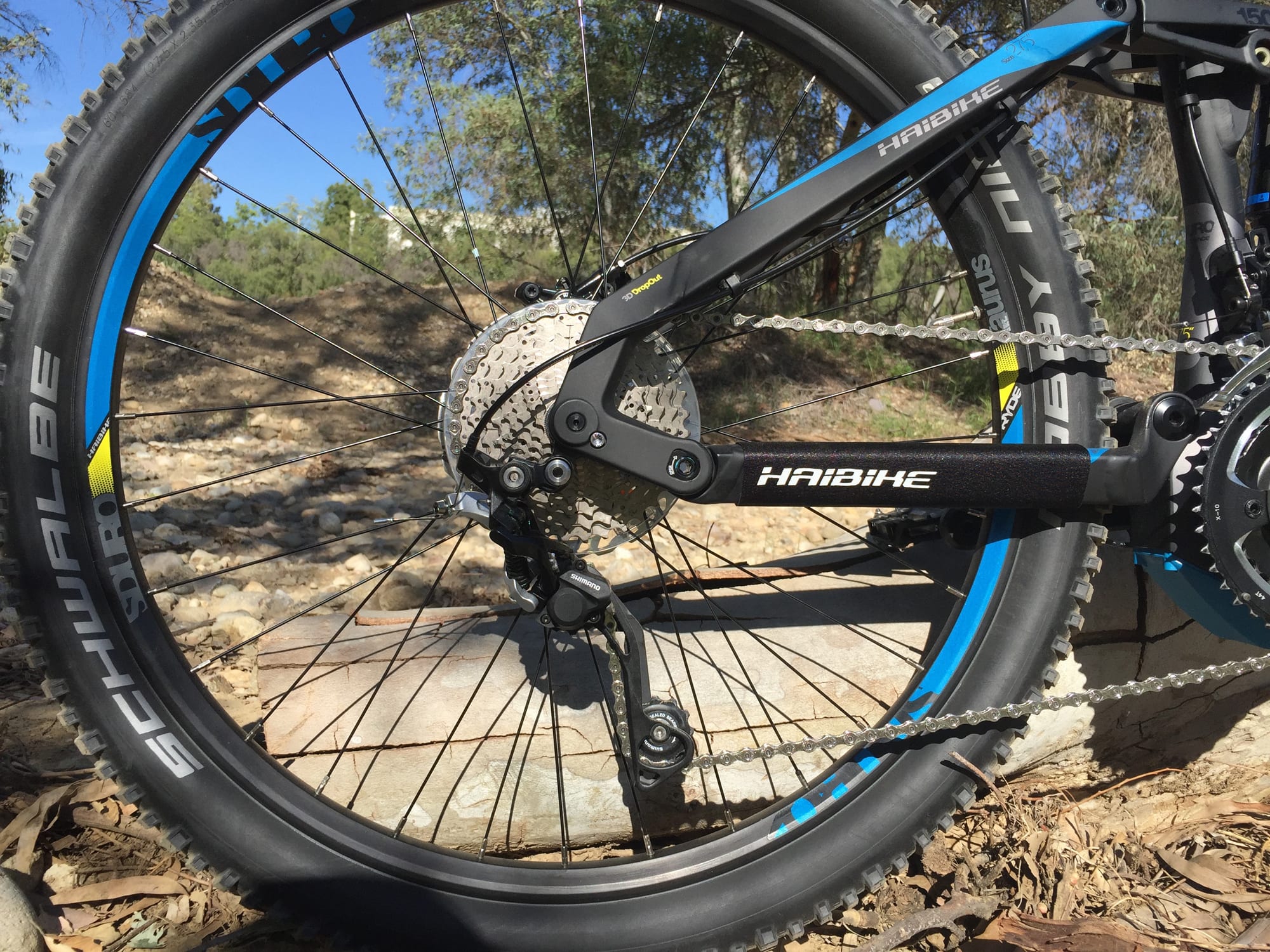
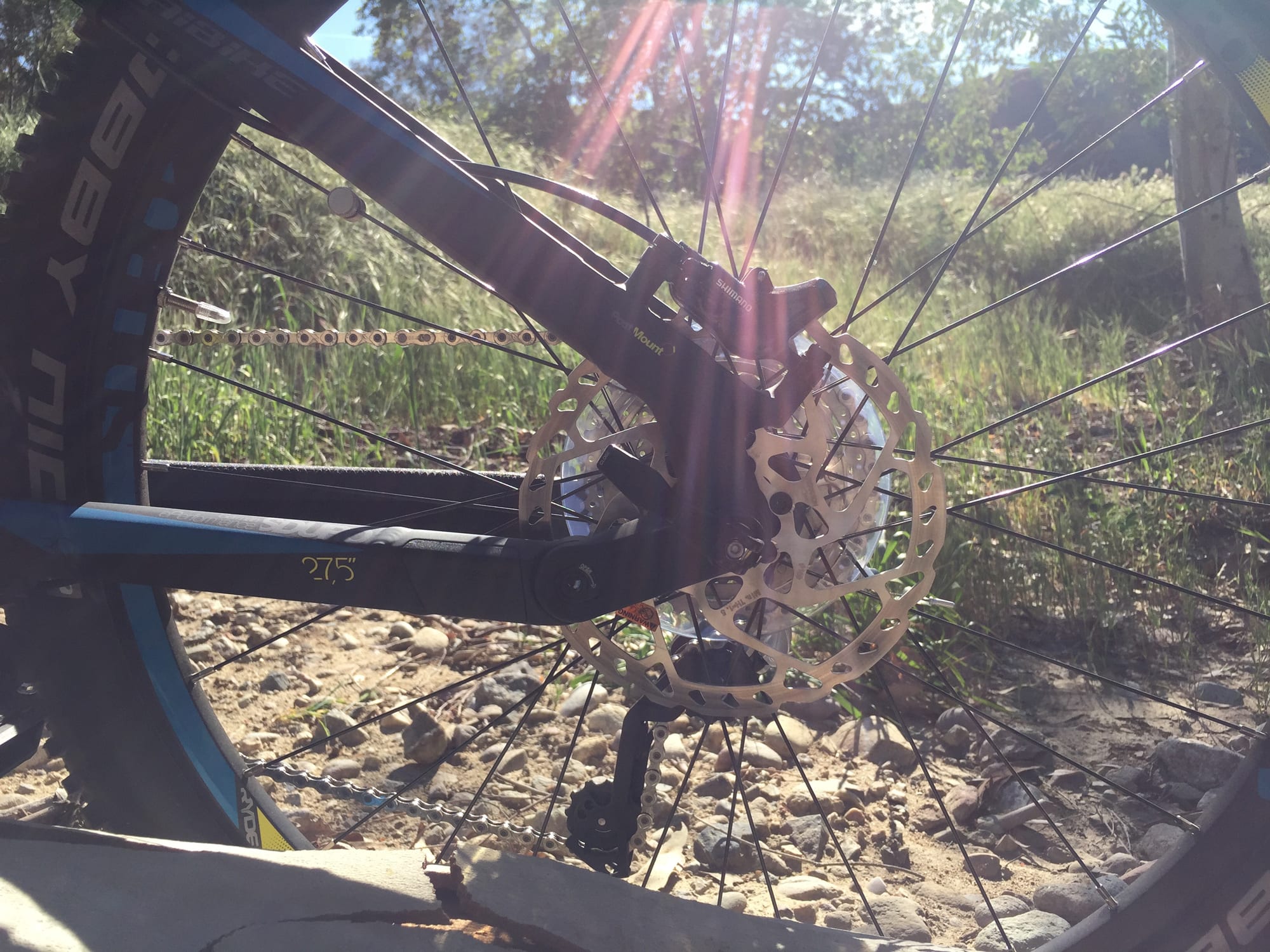
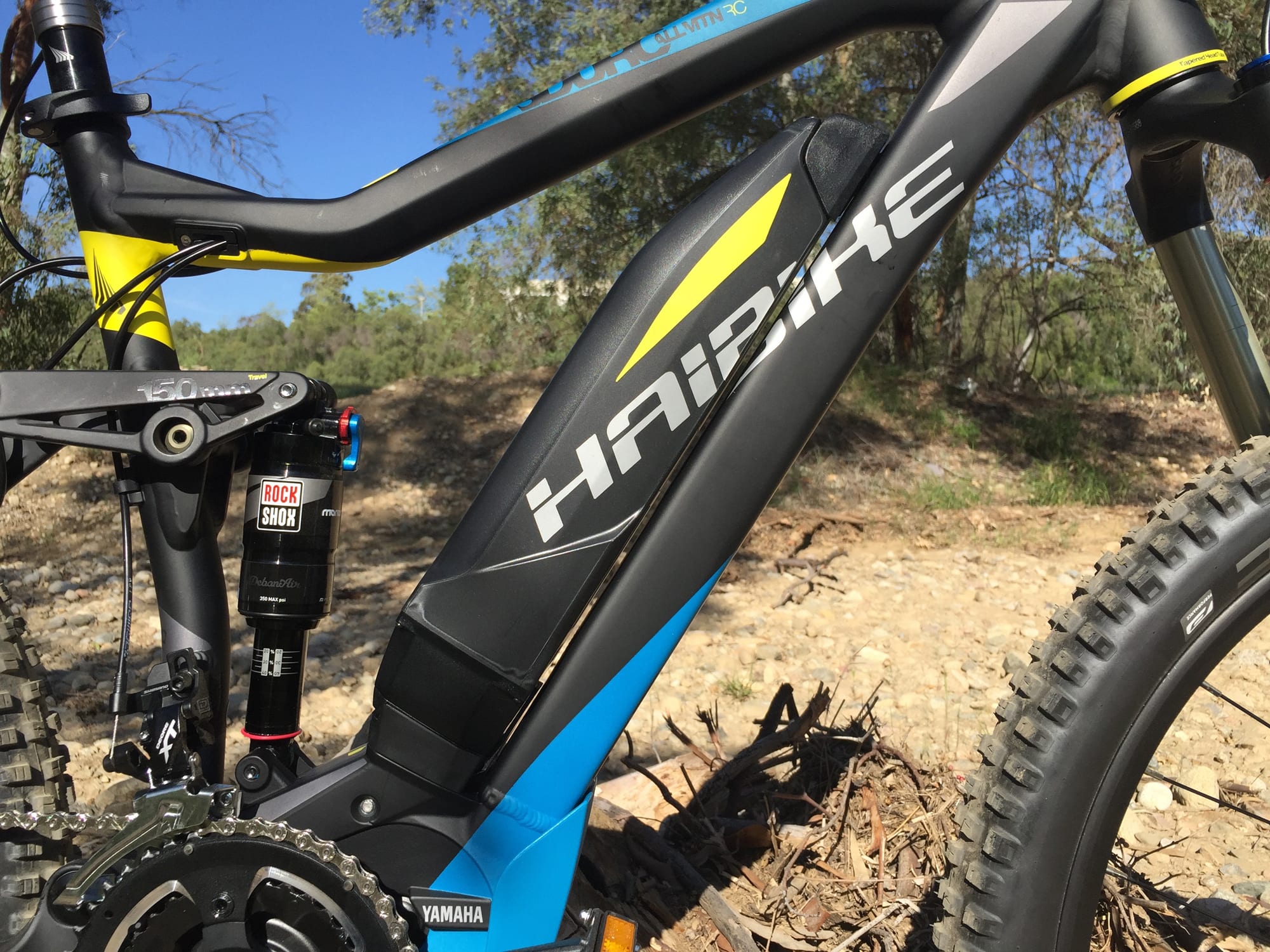
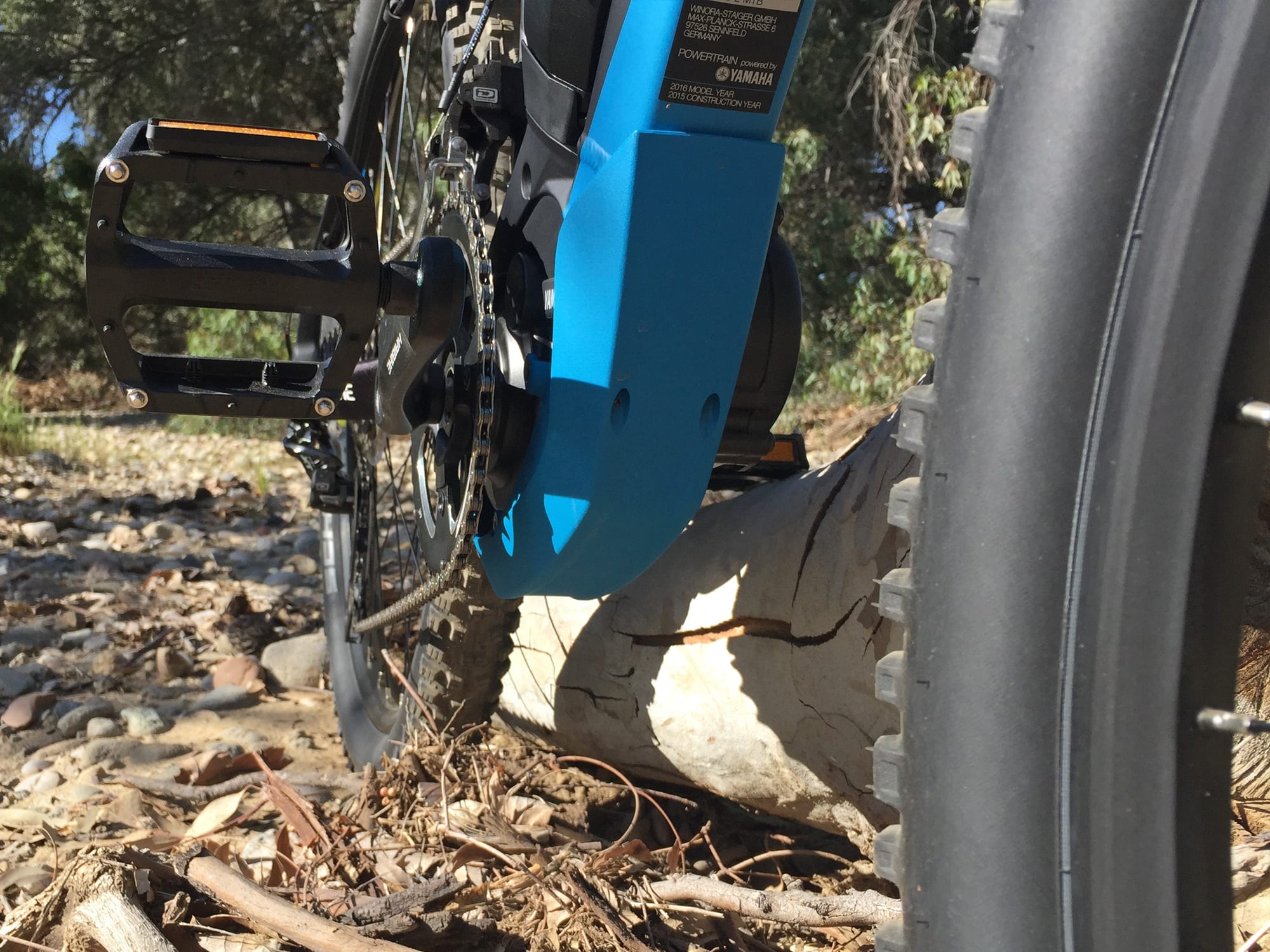
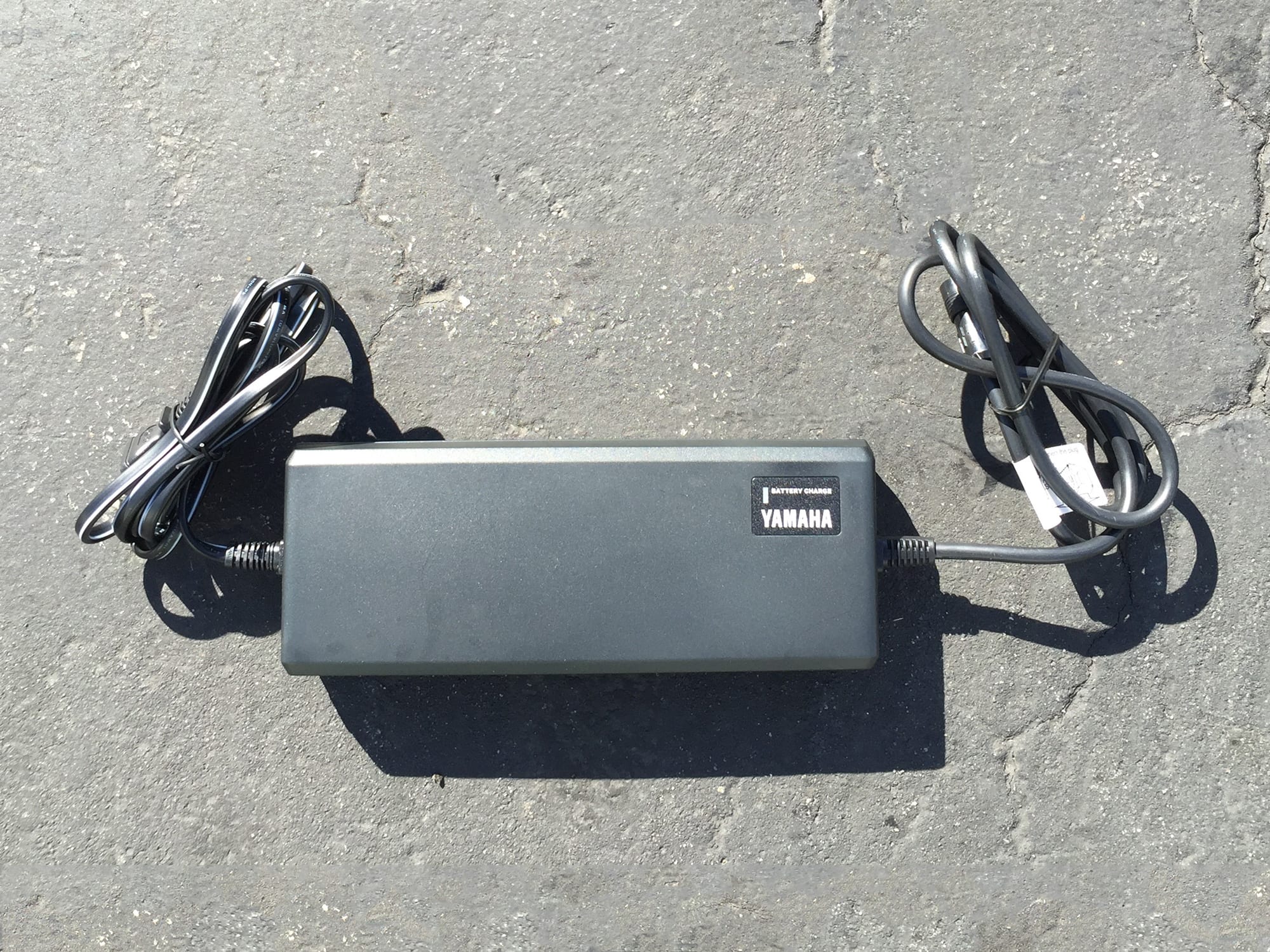
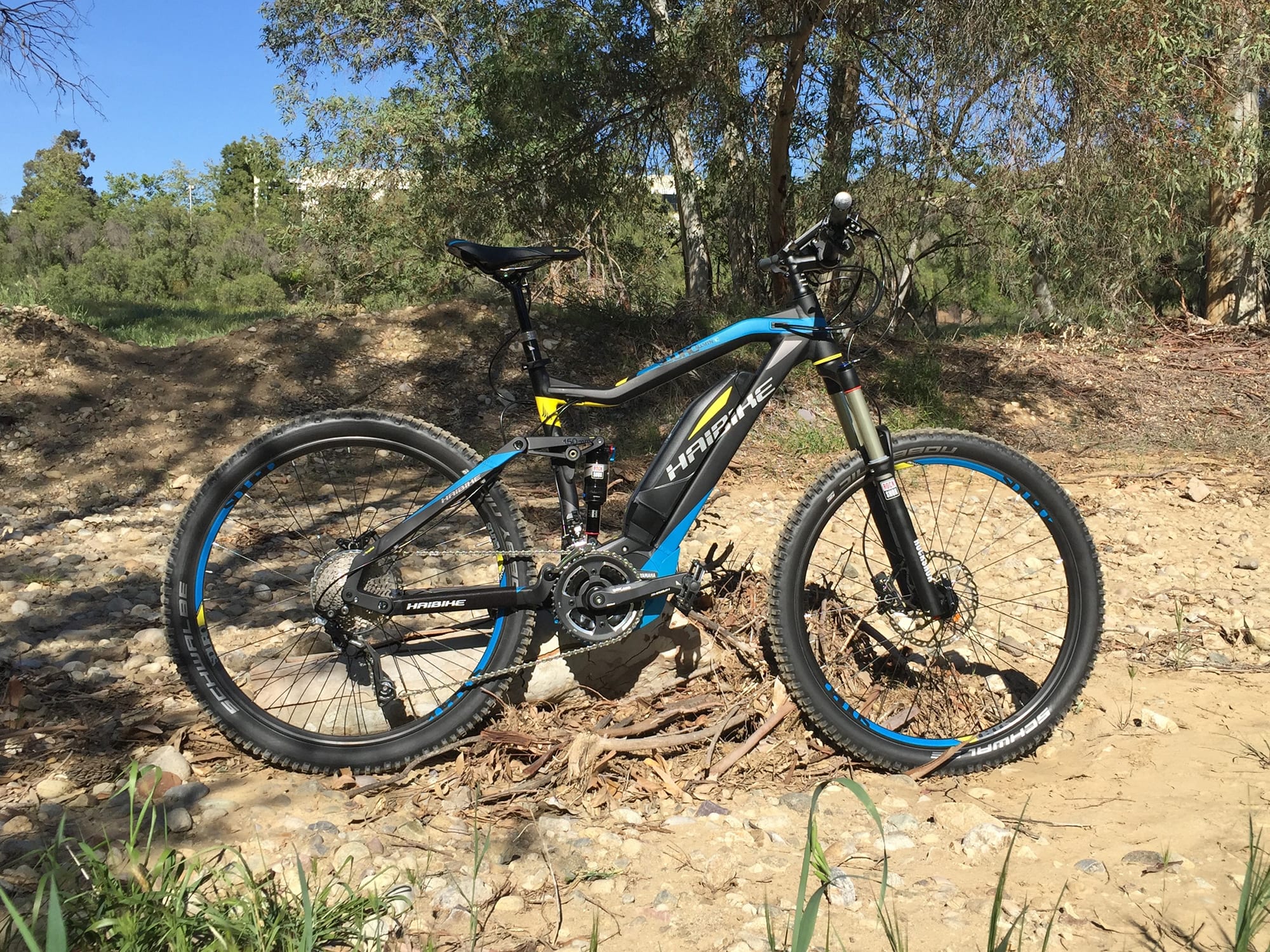

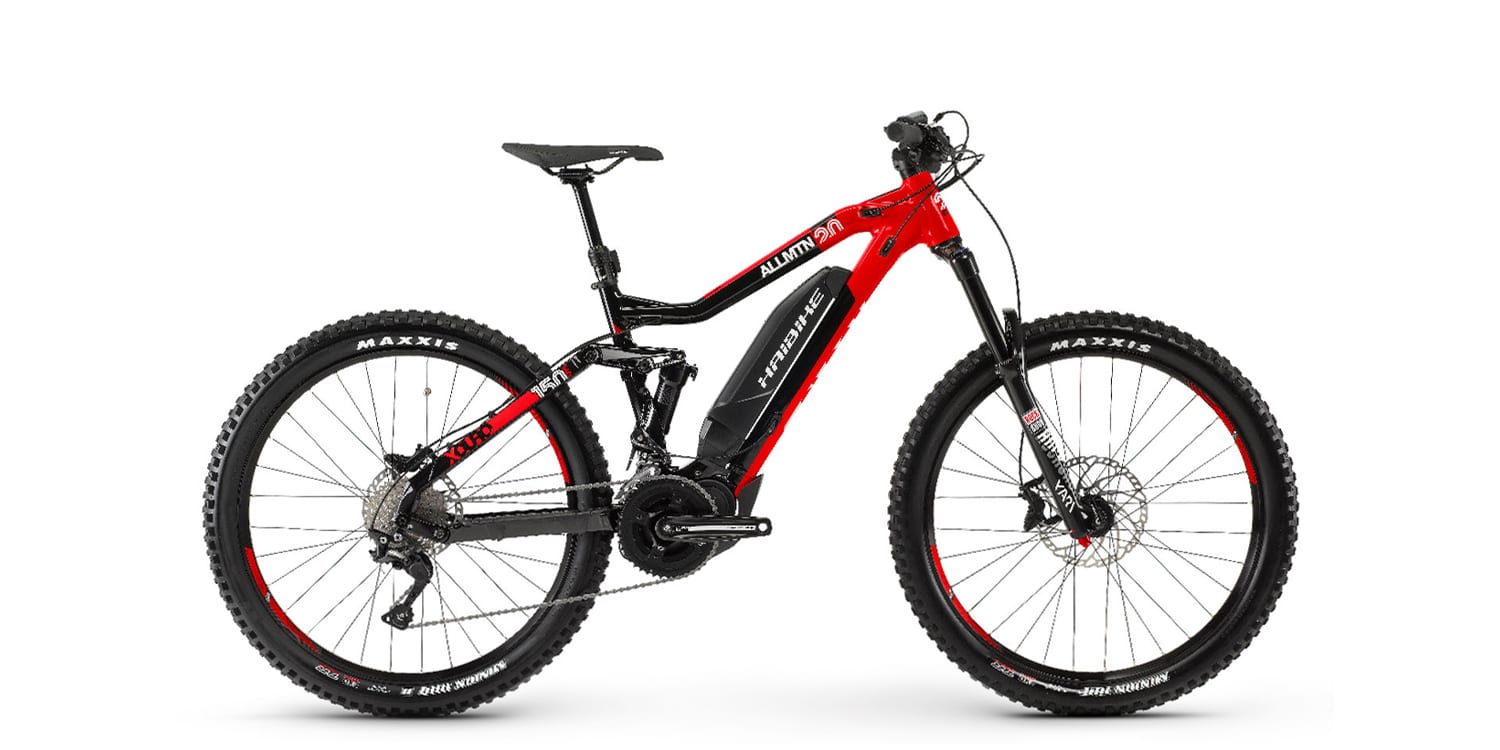
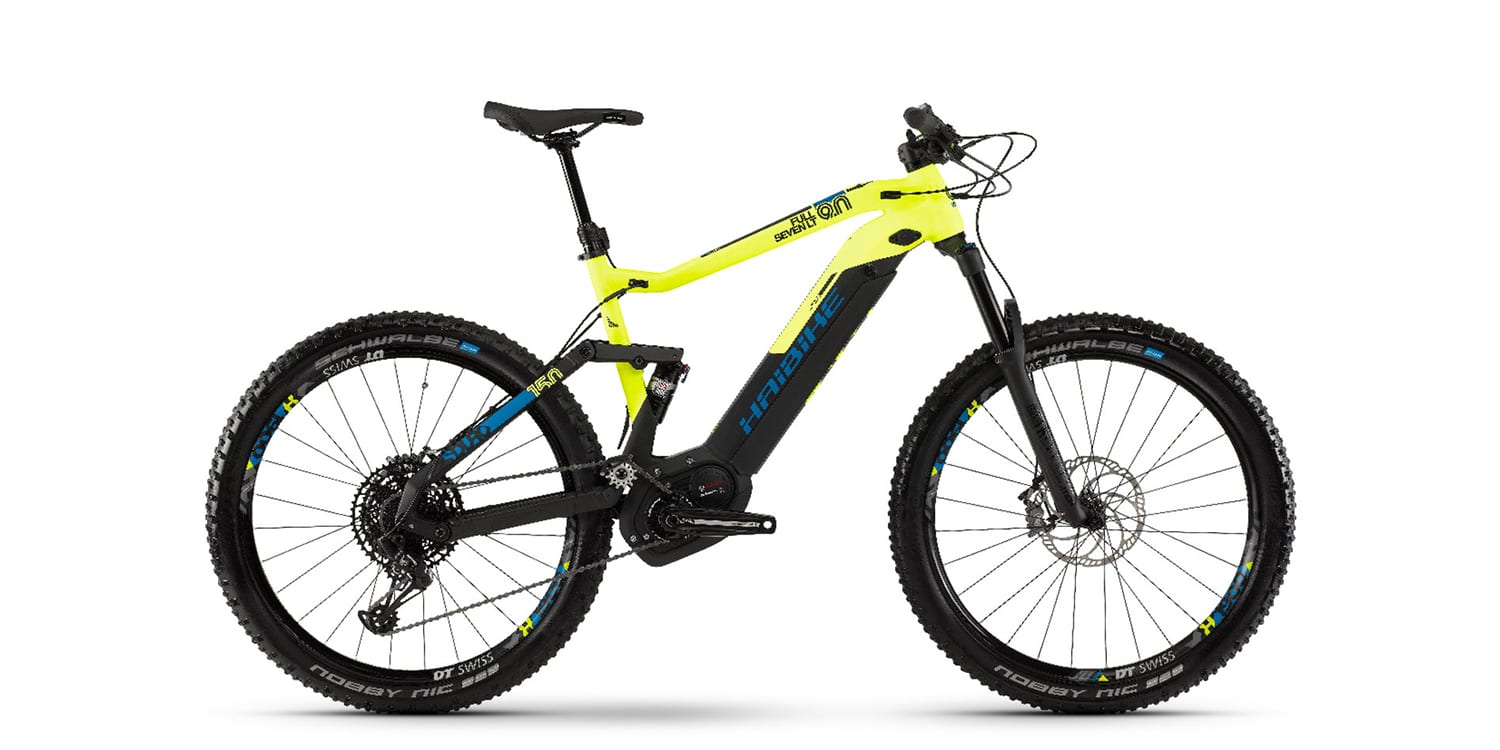
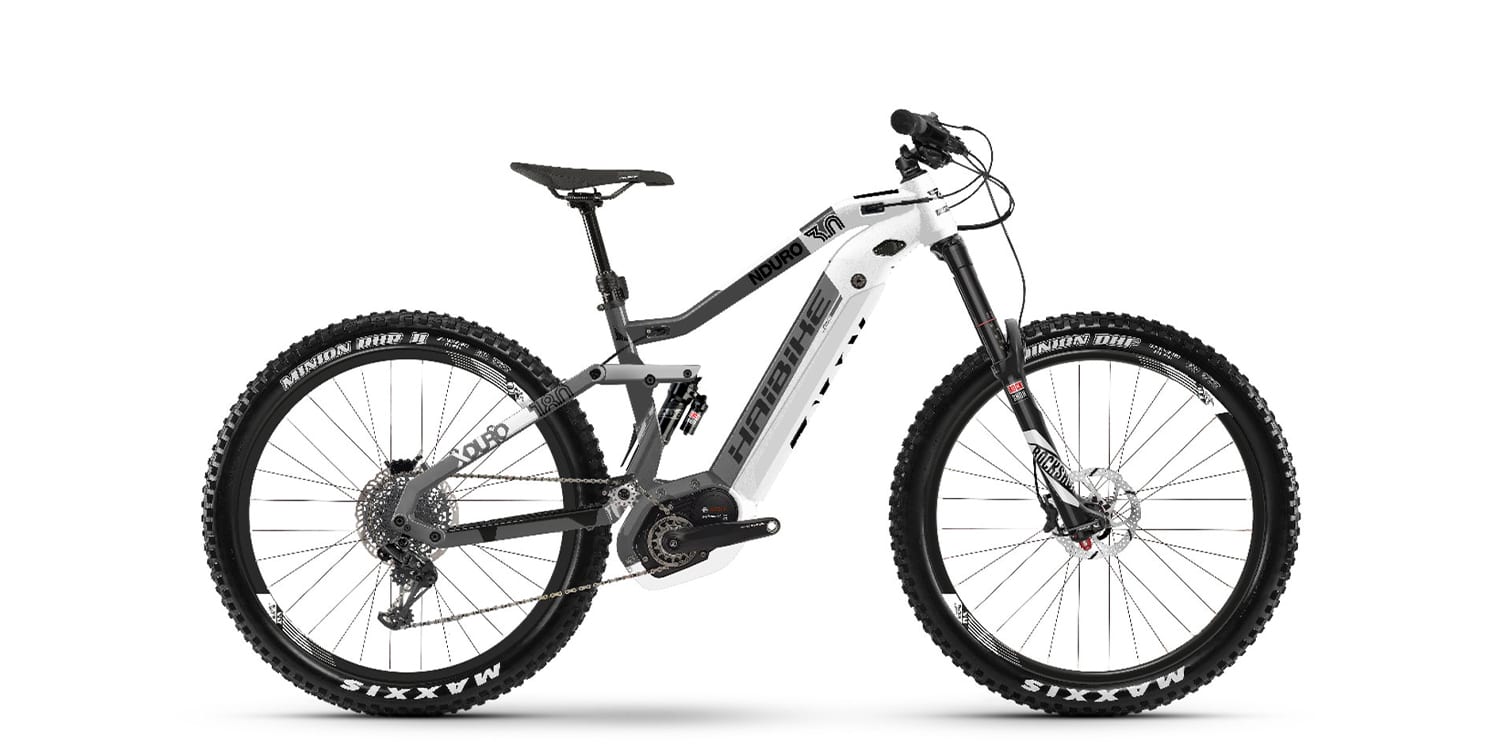
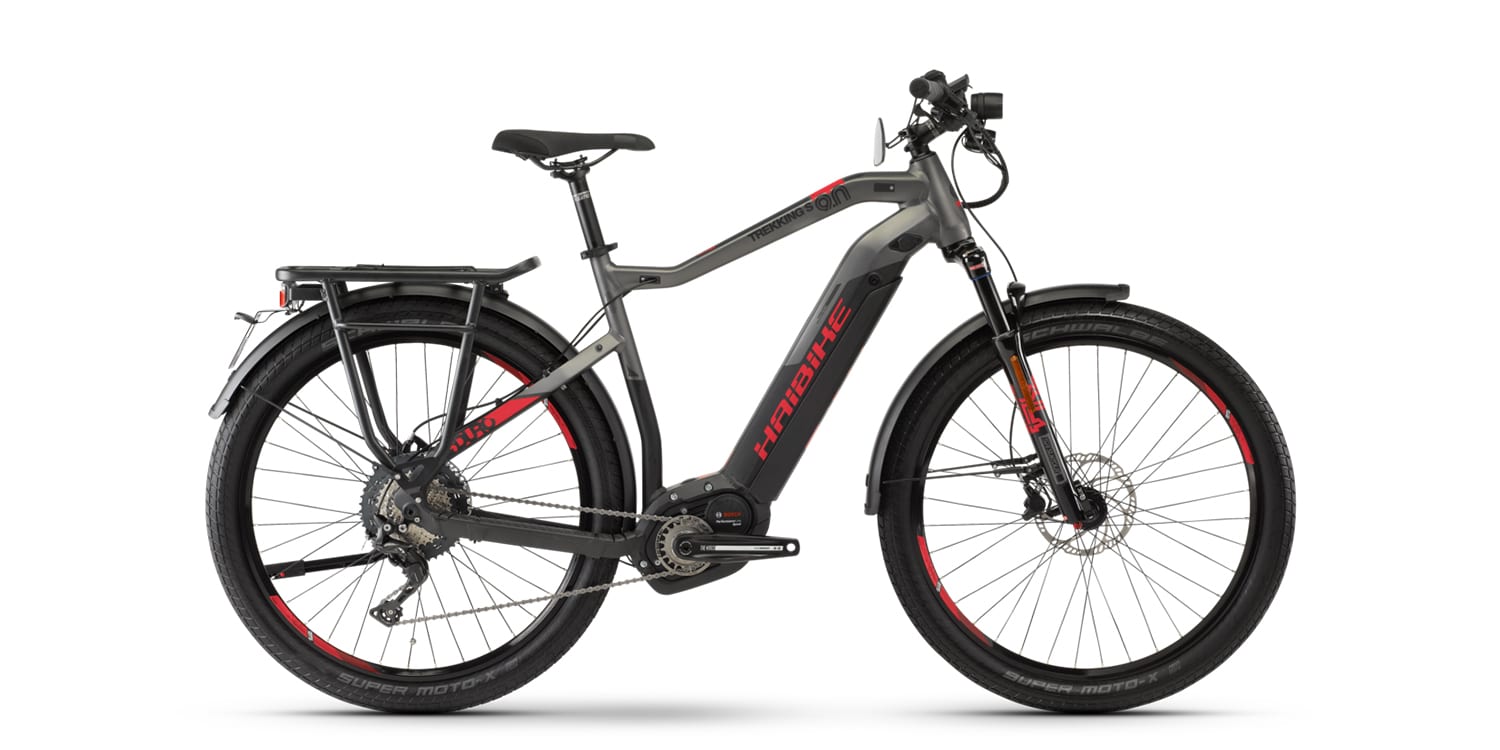
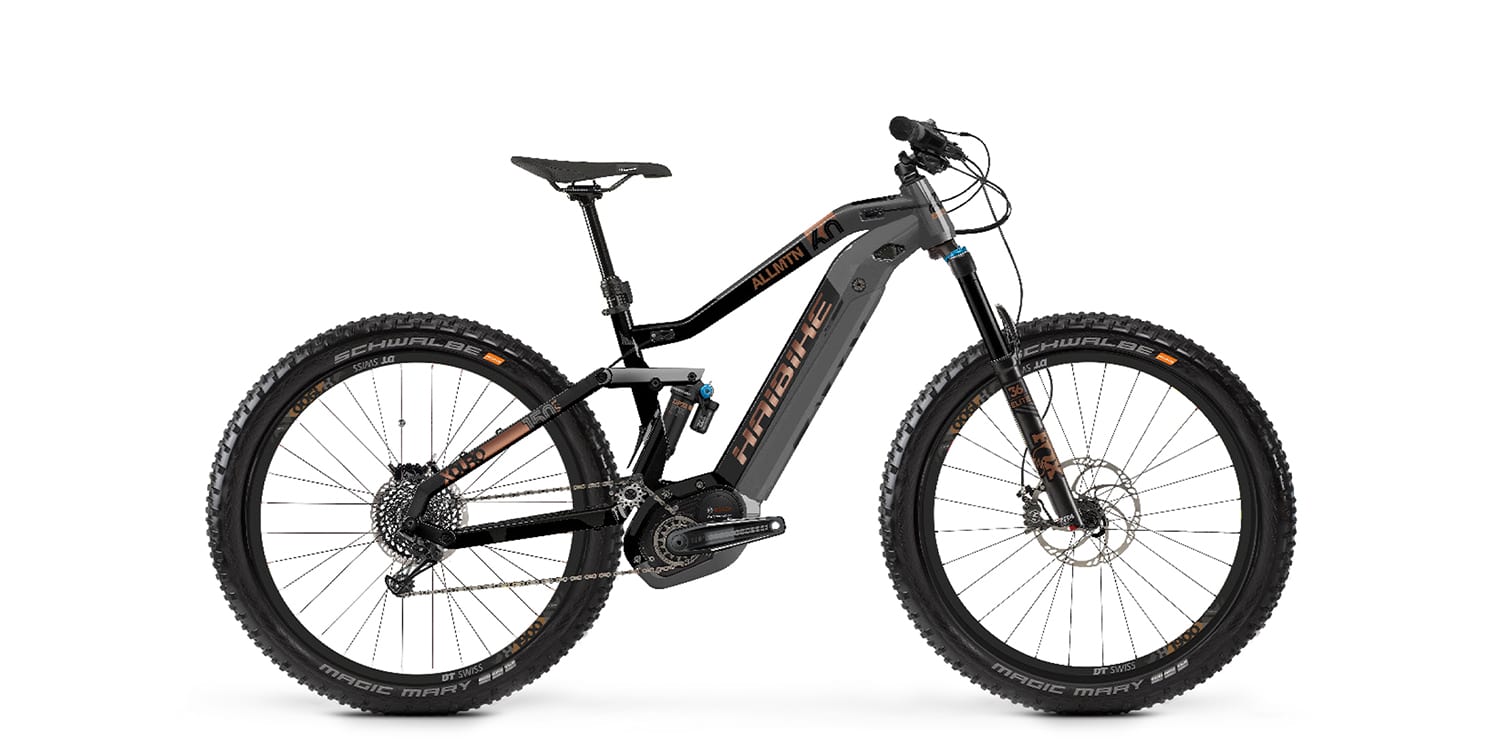
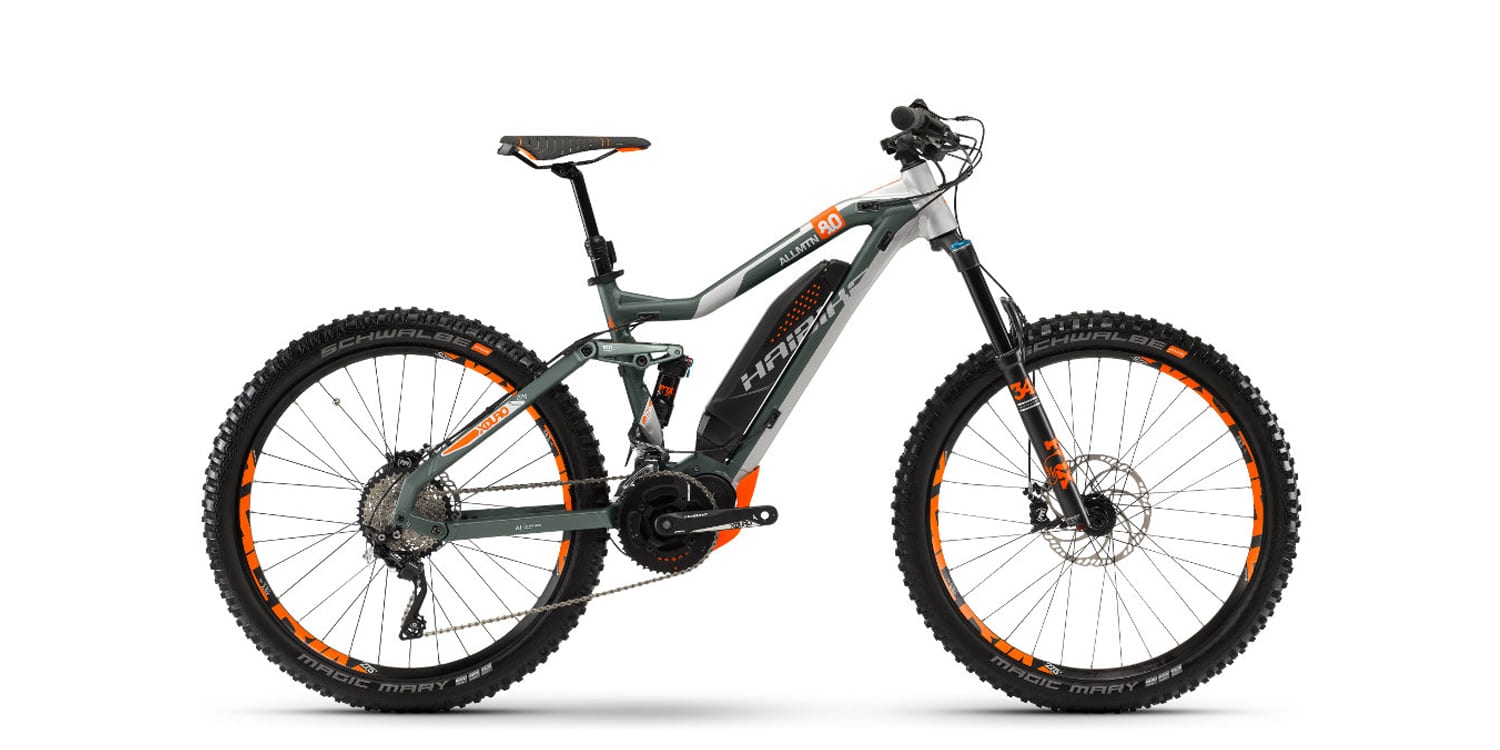
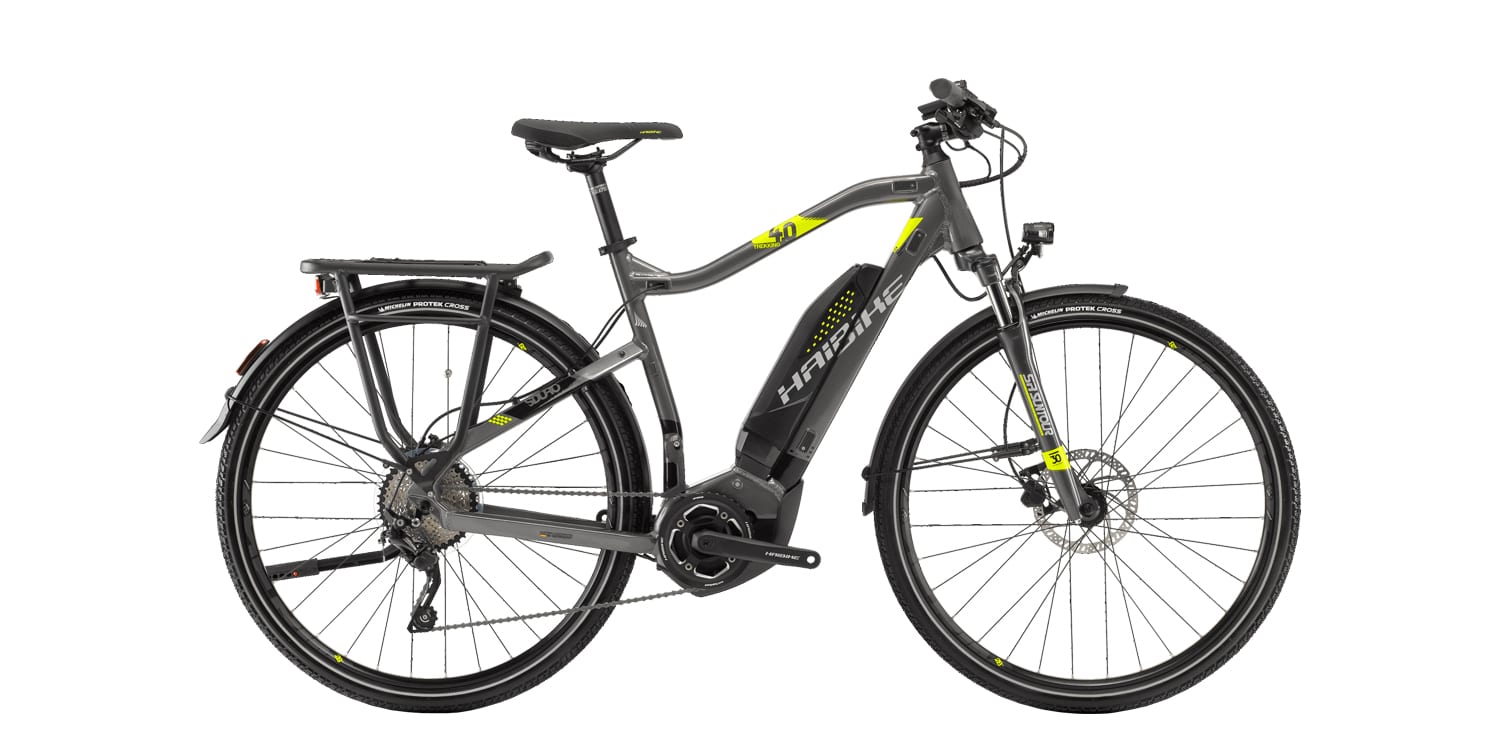
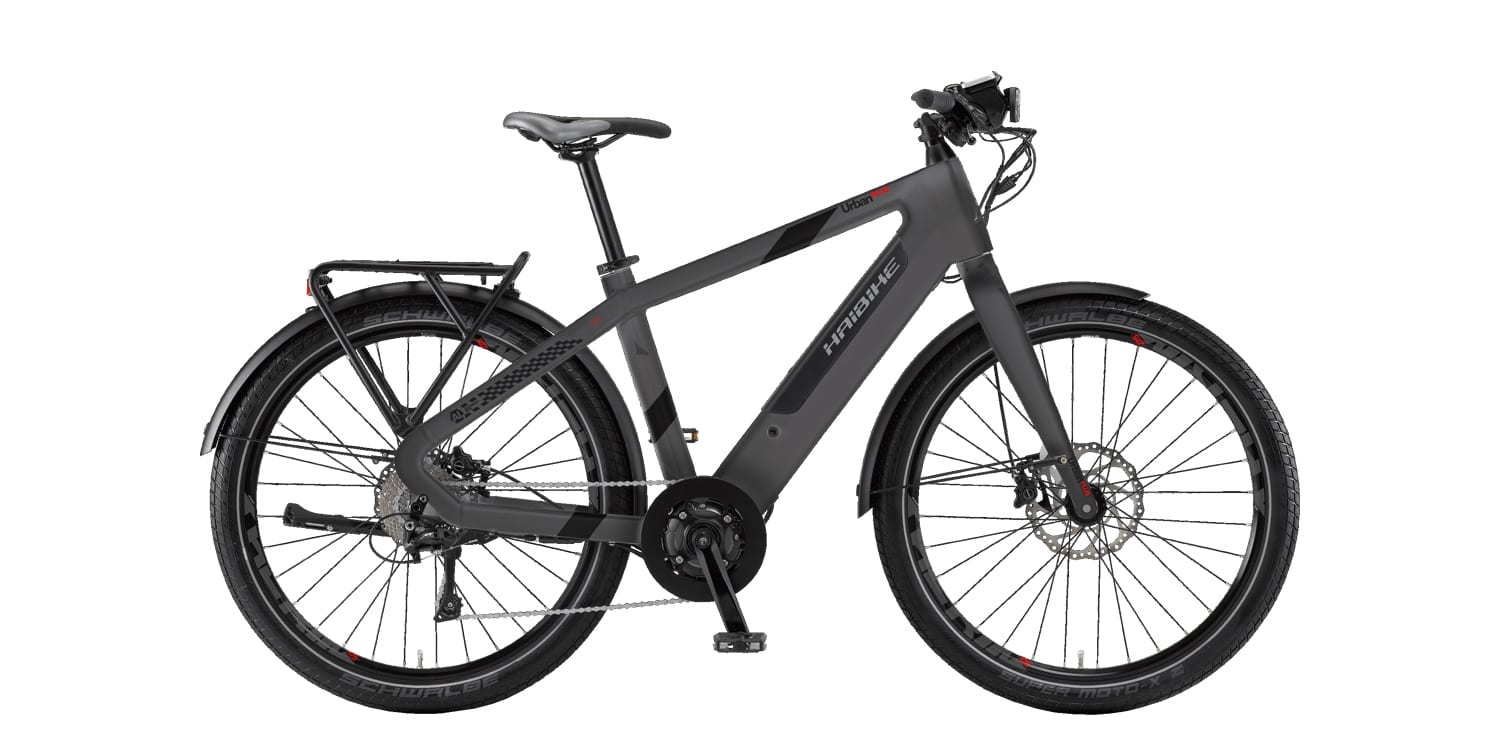
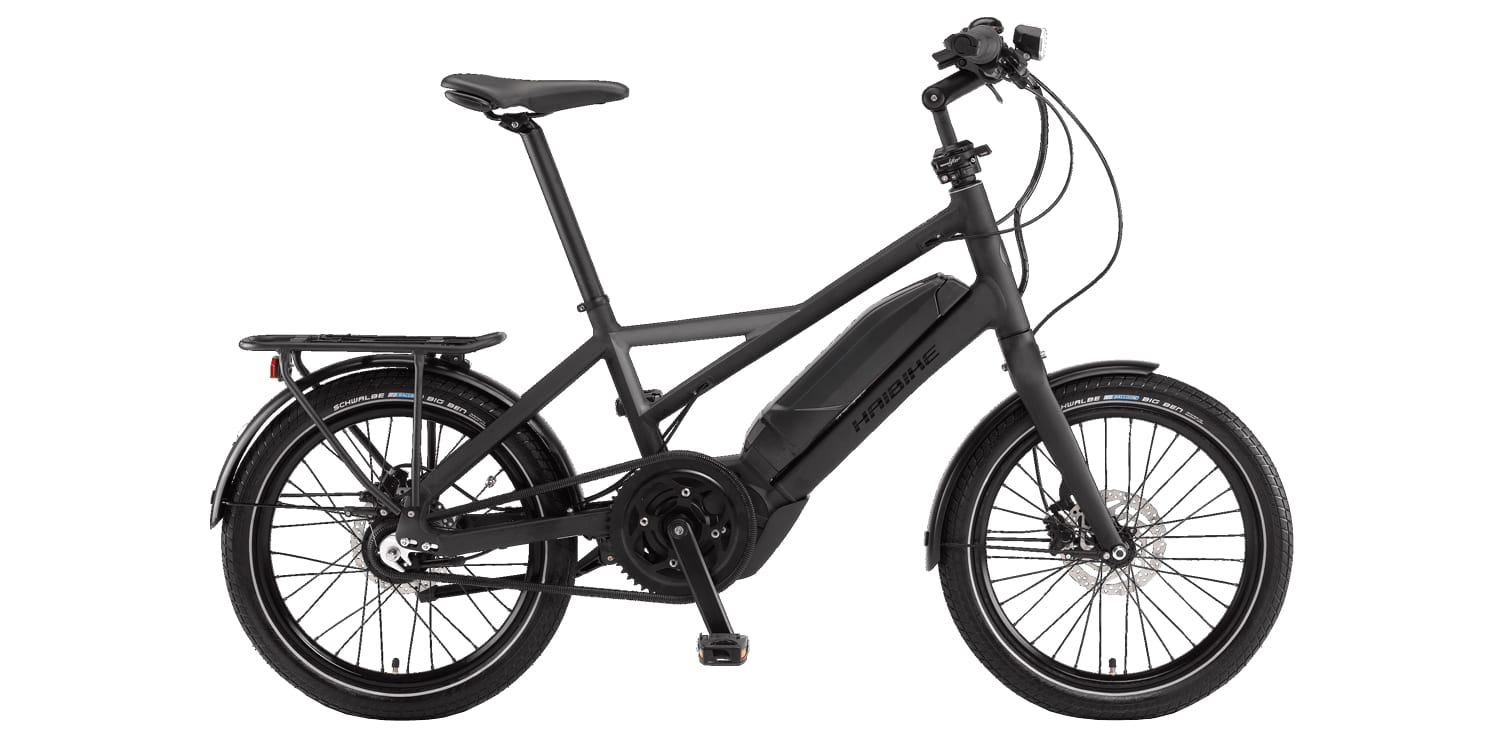
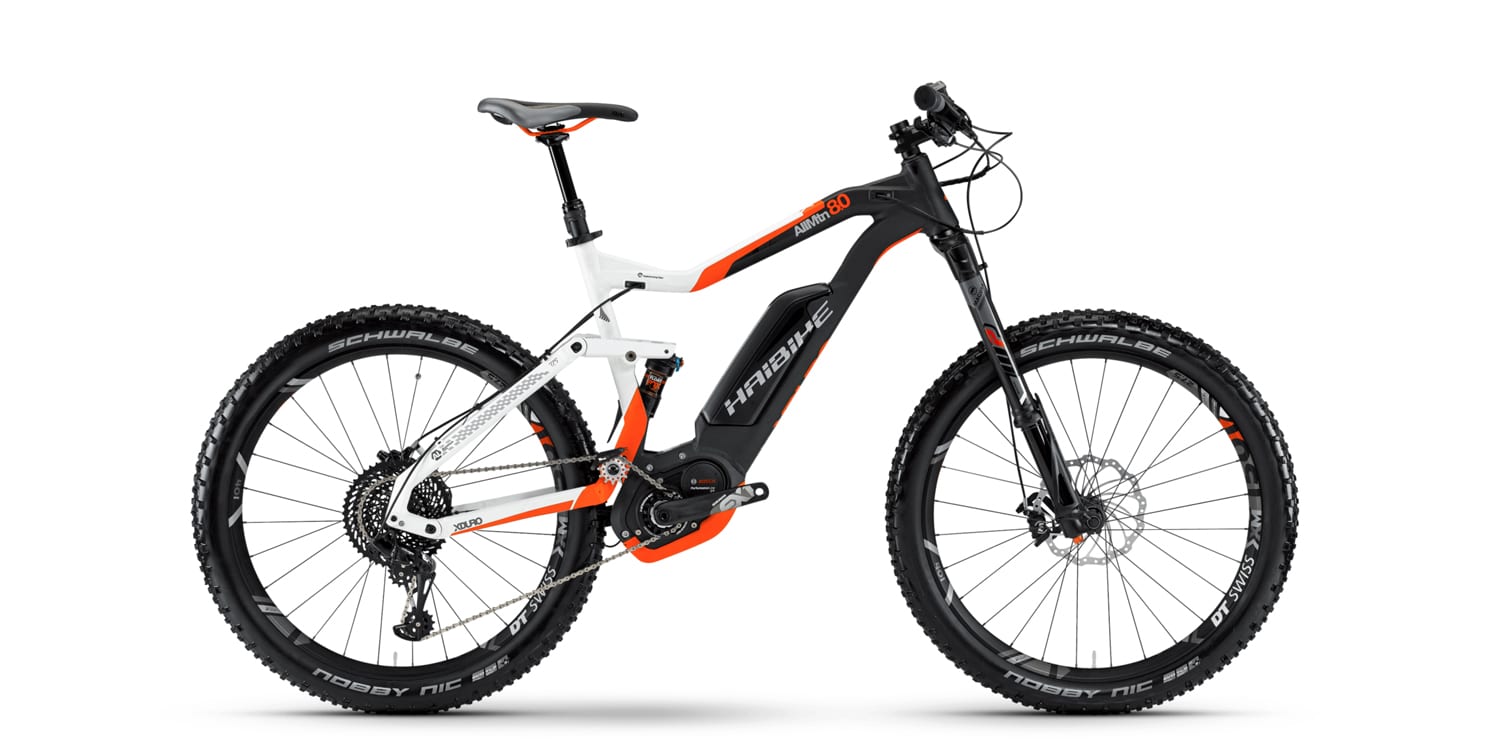
Greg says
Court, in your opinion is the Bosch system worth the price difference between the sduro and xduro lines?
Court Rye says
Yes absolutely.
Tom says
Hi Court, great review once again! I’m about to purchase one of these Haibikes, but I’m torn between the sduro SL and sduro RC. I noticed you have mentioned the main difference is the double chainring vs single. I’m not a crazy off roader or would be taking the bike to its limit so I don’t think the upgraded components between the SL to RC would matter much. But for the extra $, do you think the double chainring and drop post is worth it? I can get the RC for $475 more then the SL at my local shop. Do you know if the single chainring is upgradable to double on the SL? to be honest I prefer the color combo of the SL over the RC.
Another option is the xduro fullseven rc, I can get that for $700 more then the SL. You seem like a big fan of the Bosch motor, but just not sure if an extra $700 for that motor would really be noticeably to me. Since I mainly be using my bike on paved roads and occasional dirt/gravel trails. Let me know what you think about the SL vs the RC or go the extra mile and get the xduro fullseven rc? If the SL single chainring is upgradable to the double that would be ideal. As I could save some $ and still get the double chainring and have my preferred color combo. Thanks
Court Rye says
Hi Tom! Great questions, I think the SL would be a solid bike if it truly has the large removable LCD and the remote button pad. I reviewed an SL model from the women’s collection that had a very basic LED console with the buttons built in and lacked a USB port and the Eco+ level of assist… It actually worked fine but was a definite downgrade. My understanding is that the SDURO ALLMTN SL does have the nicer LCD but double check that (please let me know if you’ve seen it in person). The SL would be fine for what you’re describing and ~$500 is a solid savings… Having tried both XDURO and SDURO models I definitely prefer the Bosch drive system but that’s because I prefer to spin and enjoy the cadence feel vs. torque sensing feel of Yamaha. I also love the Intuvia display panel and the tighter battery integration. In my mind, it’s just better… but I still love the SDURO models and $700 could go a long ways towards buying something else. Since my focus is all about ebikes I’d pay more and upgrade but I know I would still be very happy with the SDURO and given your position I think the SL model sounds fine, I usually never shift the front gears anyway ;)
Dane says
I’m having the same dillema, ALmnt RC or Almnt SL. I haven’t been able to find a dealer that has both to compare in person. In fact dealer in Venice CA had only two hardtails with yamaha motors which is not what I’m interested. They said they will get back to me when the ALLMNT gets shipped. Let me know what was your final decision?
Hassan says
Hi please help me, I’m located at Toronto and very close to pull the trigger to buy ebike full suspention, I can’t decide what I should get, I’m 135 kg and 180 cm. But away I can spend $5800 Canadian. I’m going to use it to go downtown and 33 km mild uphill coming back from downtown, I had knee surgery so this going to best option I guess.
Court Rye says
Hi Hassan, I hope my reply reached you soon enough! I love the Haibike line but would recommend spending more for the XDURO Bosch powered bikes because they don’t take as much pressure to activate and if you have a sensitive knee that would be ideal. You may look for the 45 cm frame size as you and I are very similar in height and this is what fit me best. There is also a 50 cm frame size for most that works well. Any of the full suspension models would work for you in the correct size if you’re just riding around town (but probably not the downhill model). Check out the Haibike XDURO FullSeven. Also, here is a video of my uncle talking about using a full suspension Haibike to commute to work just like you’re talking about doing!
Lutz says
Court, have you ridden the SDURO? The Yamaha motor has the zero cadence, torque NOW system, Bosch does not. In fact, the Yamaha torque and control unit is so good that I leave the bike in one gear, the highest, and find that this covers 80% of the terrain. No stress on knees, and even spinning like a dervish the Yamah motor does not cut out. This all-terrain riding though where I rarely go over 20mph. The Bosch is fine on a trekking bike I ran in Germany on a bike path tour, but for bad knees starting in a gear that’s two numbers too high only the Yamaha will do.
Court Rye says
Cool, I appreciate your feedback Lutz! Yeah, I have ridden many ebikes with the Yamaha system including the SDURO ALLMTN RC here. The biggest difference between it and Bosch, for me, was that I prefer to spin in a higher cadence and the base Yamaha motor cuts out at 100 RPM vs. 120 RPM on Bosch Active Line and CX. This requires more shifting to pedal the way that I prefer. I do admit that the Yamaha drive is powerful and can start in a wide range of gears. Your description is clear and I appreciate how maybe it balances out what I have shared. Thank you!
Marcel says
Hi there , I’m really worried about the range you get on the bike. What are your honest estimates with range. I weigh 172lbs. Are there better ebikes out there with better range. I will be doing mostly paved roads , some gravel and the weekend trail in the woods ? Thanks
Court Rye says
Hi Marcel! In my experience the mid-drive units from Bosch XDURO can truly get 60+ miles per charge if you’re using the lowest assist level and are riding on flat paved surfaces (without a lot of wind). The estimates are based on a 160 lb rider… Unfortunately I don’t have as much in-depth experience with the Yamaha SDURO but their lowest assist seems to offer less power so you could get as much or even more range. Yes, there are higher capacity further ranged electric bicycles out there and one company to consider is Focus (or Kalkhoff, both part of the Pon group but Kalkhoff is more on-road vs. Focus being a bit of off-road too). They also use mid-drive motors but the output is 250+ vs. 350+ on Bosch and Yamaha. Hope this helps! I have a lot of love for Haibike for their style, value and warranty, my preference is the Bosch XDURO but Yamaha is decent too :)
o.c rider says
I actually own this bike and have put a few hundred miles on it. I also own a 2015 Xduro FullSeven RX (same bike Court owns I think), and a Felt Dual-e, (also with the Bosch system). I have quite a few miles on the Bosch system under my belt and on the Yamaha system, which is rare, so I think it would be helpful to share what I’ve learned. I’ve ridden both down super steep, technical, trails and hammered them hard. Through creeks, loose rocks, mud, tree roots, you name it. I’ve been mountain biking since 1992.
Here in orange county we have a riding area called Whiting Ranch and there’s a trail called Mustard. At the end of Mustard is a pretty steep hill, most average to below average guys walk up for the last 20 ft to give you a mental picture, its the end of a pretty long climb to the top. I did back to back to back comparison tests up the last 100 feet of this trail, Bosch vs. Yamaha. They feel different. By different I mean different. The Bosch makes you feel like you’re moving faster, cause like Court says you’re spinning a little lower gear on the Bosch. The reality is that the Yamaha actually has a lower final gear ratio, you can spin if you want just like on the Bosch. But on the Yamaha it’s easy to push a little higher gear and thus travel a lot faster, and BTW this is Bosch Turbo mode vs. Yamaha High (both systems at the highest settings). I’m not talking about blow out your knees pushing up a hill, the bikes are on the highest boost mode, you’re not gonna kill yourself of anything let’s get real. If you raced your friend and your skills were equal, I believe the Yamaha bike is a bit faster up hills, just a bit, like one bike length over a 100 foot race up a hill faster. It’s a faster bike up hills was my conclusion, but not by much, either bike you’re still basically lance armstrong compared to any other rider on the trail. But this is not the full story.
By the way, on the Yamaha system I see no reason to ever shift the front into the large chain ring. You could take it off really. You just never need it. Re-reading I’m wondering if Court test rode the bike in the large chain ring in the front, maybe leaving him with the impression that you had to really push the bike to get speed? (the bike is on the large front in the video picture?) The boost stops at 20mph and that’s right about where the smaller front chain ring leaves you. To shift up to the large front chain ring would be in situations where you’re pedaling over 20mph, and that’s where the computer fights you and resists going over 20, totally pointless to fight the system to get to 25 or whatever. I’m sure they spec’d the 2×10 drive just to save dollars, the Yamaha system should be a 1×10, or 1×11 just like the Bosch in my opinion.
Anyways, the full story with the Yamaha bike is that it costs less than the Bosch system. Quite a bit less. And the Sduro AllMtn’s have 150mm of suspension vs my other bikes 120mm. Big huge fat difference. 150mm is so much better, especially on a 50lbs bike. I’ll never go back. Also here’s the biggest dirty secret on Bosch bikes: the 16t front sprocket + wet/sand/mud = Chain suck. Lock the cranks cold, chain suck. Ruin your ride chain suck. Get so frustrated you dip your drivetrain in a creek to try to fix it chain suck.
16t front is just too small, plain and simple. Bosch could’ve spec’d at least a 18t or maybe a 20t and changed the internal gearing. But for some reason they didn’t. Ok on BOTH my Bosch bikes, it’s the same story. The SES pulley on the Haibike might help, but I’ve got the suck on both very annoyingly so. It’s when the chain gets dirty basically. Look at the bosch equipped bike, it’s pretty simple, combine Lance Armstrong on PED’s amount of torque, a regular mid-grade $20 bike chain, and a smaller-than-even-a-singlespeed 16t front sprocket and the numbers don’t add up. Something’s gotta give. I’ve replaced the chain with X01 and it helped but when it gets wet and muddy or sandy look out, it’ll ride around the front sprocket like a merry go round and lock the cranks on you. In every gear. I’ve troubleshot it. There’s no escape. Bring a can of aerosol spray chain clean/lube with you if you ride bosch in wet. I’ve talked to Bosch people. They have no solution other than keep it clean, replace chain, replace sprocket.
The Yamaha system is so simple in contrast, it reminds me of a toyota truck. It just works. Nothing fancy, just plain works. Bosch is like VW – meaning it leaves me wondering if German engineering is so amazing, why aren’t they the most reliable cars on the road? I’m exaggerating a bit, but seriously Bosch is nice but I’m more of a Honda guy than a Mercedes guy.
So to sum up this stupidly long post, if the Bosch bikes and Yamaha bikes from Haibike were equipped exactly the same and priced exactly the same I’d still choose the Yamaha for its drivetrain simplicity. But the fact that the Yamaha bikes are priced almost a $1000 less? No brainer, Yamaha.
Court Rye says
Great feedback, excellent points! Thanks for taking the time to share it all… I may have been in the larger ring for this review as you suggest but have ridden other SDURO (Yamaha) bikes where there was only a 1×10 drivetrain and it still felt like a lower RPM activation range with lower speed outputs which just wasn’t as satisfying for me as Bosch. I’ve heard 80 RPM for Yamaha and 95-100 for Bosch? It’s totally a style thing and I was indeed impressed with Yamaha and their lower price. As for the smaller sprockets and chain suck… yeah, I’ve heard about this from other high-level riders, here’s a thread where EddieJ shows his muddy bike and talks about it. Apparently Bosch lets each bike maker decide on sprocket size and they range from like 16T to 20T which might help. It’s a trade off, glad both are in the space working to make their stuff even better :)
John Watts says
Hi Court. I have been reading your reviews and have enjoyed them. I would like some input on making a selection of an ebike. I have looked at and had a short test ride on Pedego’s Ridge Rider 27.5 Mountain Bike, Specialized Turbo Levo FSR Comp 6Fattie and Haibike”s AllMtnSL. I am an above knee amputee and when I ride i get about fourth the power on my down ward stroke out of my artificial leg than my good leg. When i road the Haibike i was watching the power bar on the left of their screen and really noticed the lack of power my artificial leg produced it was down about a fourth or less of my other leg. So my question considering most of my power comes out of one leg which ebike system would recommend for me. I saw that you mentioned the Bosch system for some one with a bad knee. I am leaning tward Haibike’s AllMRsl right now of the bikes I have tested, they did not have any of the Bocsh system bikes to try. The Specialized bike I tried seem to slow down fast when you stoped pedealing, not much glide, maybe its the faty tires. Thank you
Court Rye says
Hi John, great to hear your thoughts on this… my own experience with the SDURO Yamaha system is that it makes you push harder than with the higher levels of XDURO Bosch models. You can still get a workout (and possibly struggle with your artificial leg) if you use the lowest assist but the higher ones are awesome. I feel that the system balances cadence and torque for power output vs. relying more heavily on torque. Another model I’ve been hearing about that might put power out for longer even if you’re not pushing as hard is the new Stromer ST2 X but I haven’t tried it yet. I have tested several Easy Motion bikes and they have some lag with assist and a throttle so you could switch to that if you needed a break. The only downside is that the throttle does not override assist… so you have to adjust it with the left button pad then twist. I hope this helps to guide you! I’d love to hear what you decide on or further feedback as you test more bikes.